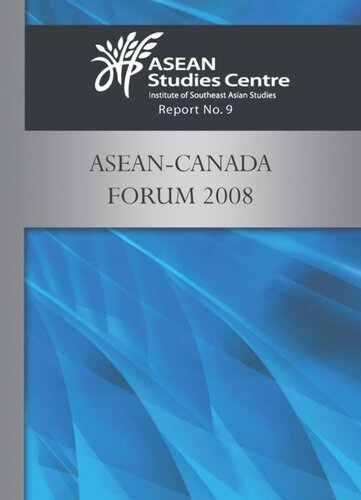

Most ebook files are in PDF format, so you can easily read them using various software such as Foxit Reader or directly on the Google Chrome browser.
Some ebook files are released by publishers in other formats such as .awz, .mobi, .epub, .fb2, etc. You may need to install specific software to read these formats on mobile/PC, such as Calibre.
Please read the tutorial at this link: https://ebookbell.com/faq
We offer FREE conversion to the popular formats you request; however, this may take some time. Therefore, right after payment, please email us, and we will try to provide the service as quickly as possible.
For some exceptional file formats or broken links (if any), please refrain from opening any disputes. Instead, email us first, and we will try to assist within a maximum of 6 hours.
EbookBell Team

4.4
62 reviewsIn November 2008, the Regional Economic Studies Programme of the Institute of Southeast Asian Studies (ISEAS) and the Singapore office of the International Development Research Centre (IDRC) of Canada organised a forum on “Regional Economic Integration – ASEAN and Canadian Perspectives”. The forum concluded that fundamentally the ASEAN Free Trade Area (AFTA) and the North American Free Trade Agreement (NAFTA) were two different kinds of agreements. First, while NAFTA focused entirely on trade and investments, the scope of AFTA was much broader, going beyond issues of trade and investments alone. Secondly, NAFTA was a lightly institutionalized regional trade agreement. There was no formal policy of institutional or policy development, and it lacked legislative instruments. Although ASEAN had a secretariat, its regional institutions remained weak in comparison to those of the European Union. Thirdly, the dispute-settlement mechanism in ASEAN was different from that of NAFTA. The ASEAN provisions were scattered over a number of documents and covered both economic (trade and investment) issues and other disputes (e.g., political or territorial), while NAFTA provisions were contained in a single document and could be applied only to matters related to trade and investments. Finally, although many studies presented trade liberalisation as a win-win proposition, the distribution of costs and benefits was mostly uneven. In the case of Canada, short-run gains in efficiency from expanded trade could be identified, but it was harder to determine longer-term dynamic gains. On the other hand, in the case of ASEAN, it was still grappling with the issue of the development divide, especially since the admission of Cambodia, Laos, Myanmar and Vietnam into the group.